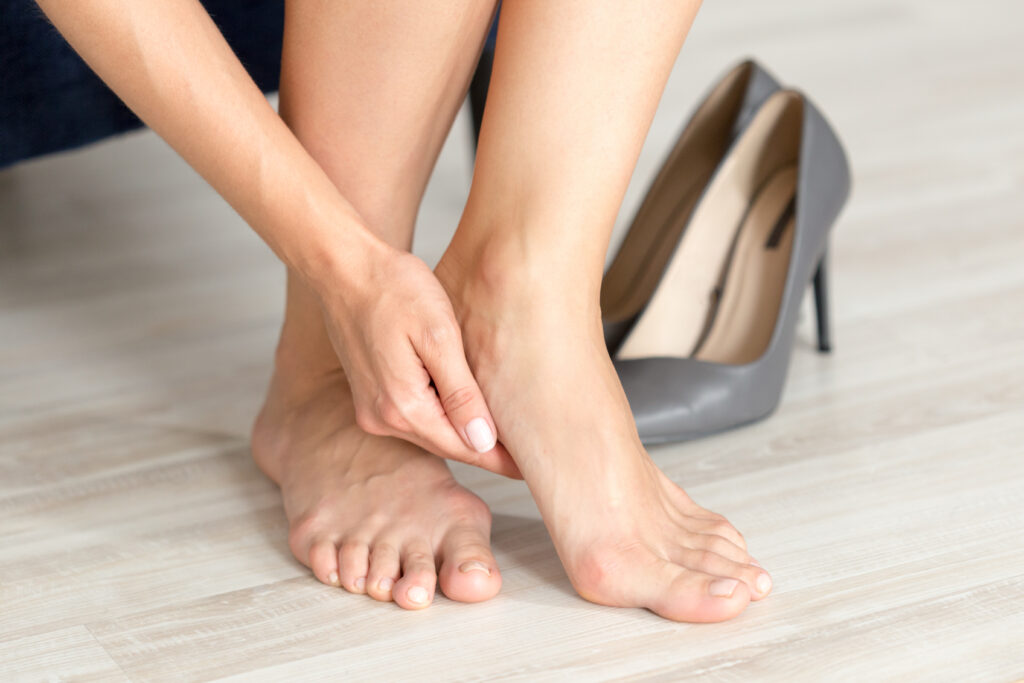
If you’re new to exercise and experiencing morning heel pain, you may be dealing with plantar fasciitis. This common condition can cause discomfort, especially in the mornings, for those starting their fitness journey. In this article, we will explore the ins and outs of plantar fasciitis and provide essential tips for managing and preventing this issue. Here’s a brief outline of what we will cover:
- Understanding plantar fasciitis and its causes
- Recognizing the symptoms of plantar fasciitis
- Tips for managing morning heel pain
- Strategies for preventing plantar fasciitis as you begin exercising
Understanding Plantar Fasciitis: Causes and Risk Factors
Plantar fasciitis is a common condition that occurs when the plantar fascia, a band of tissue connecting your heel bone to your toes, becomes inflamed or irritated. This inflammation can result from various factors, including:
- Overuse: Exercising too intensely or for extended periods without proper rest can strain the plantar fascia, leading to micro-tears and inflammation.
- Foot Mechanics: Issues such as high arches, flat feet, or abnormal walking patterns can put extra stress on the plantar fascia, increasing the risk of developing plantar fasciitis.
- Improper Footwear: Wearing unsupportive shoes or ones that don’t fit properly can contribute to poor foot alignment and mechanics, exacerbating the condition.
Recognizing the Symptoms of Plantar Fasciitis
The most common symptom of plantar fasciitis is pain at the bottom of the heel, particularly in the morning or after long periods of rest. This pain may also worsen after exercise or prolonged standing. Other symptoms include:
- Heel stiffness
- Tenderness along the arch of the foot
- Sharp or stabbing pain with the first steps in the morning or after sitting for a while
Seeking early treatment and making lifestyle modifications can help alleviate symptoms and prevent further complications associated with plantar fasciitis.

Managing Morning Heel Pain and Preventing Plantar Fasciitis
Tips for Managing Morning Heel Pain:
- Stretching Exercises: Regularly stretching the calf muscles and plantar fascia can help reduce stiffness and relieve pain in the mornings. Incorporate gentle stretches into your daily routine, especially before getting out of bed.
- Proper Footwear: Invest in supportive shoes with cushioning and arch support to alleviate pressure on the plantar fascia. Avoid going barefoot or wearing unsupportive footwear, especially during exercise.
- Ice and Rest: If you experience heel pain, apply ice to the affected area and rest your feet to reduce inflammation and discomfort. Avoid high-impact activities that may exacerbate the condition.
Preventing Plantar Fasciitis as You Begin Your Fitness Journey:
- Gradual Progression: Avoid overdoing it when starting a new exercise routine. Gradually increase the intensity and duration of your workouts to give your body time to adapt and prevent unnecessary strain on the plantar fascia.
- Cross-Train: Incorporate a variety of low-impact activities such as swimming or cycling to reduce repetitive stress on the feet and lower limbs. This can help prevent overuse injuries like plantar fasciitis.
- Listen to Your Body: Pay attention to any discomfort or pain in your feet and heels. If you experience persistent symptoms, seek professional help from a healthcare provider or a physical therapist to address the issue proactively.
By implementing these strategies and being mindful of your foot health, you can effectively manage morning heel pain and reduce the risk of developing plantar fasciitis as you embark on your fitness journey.

Morning heel pain can be a common issue for beginners starting their exercise regimen, often attributed to plantar fasciitis. By understanding the causes, recognizing the symptoms, and implementing effective management and prevention strategies, you can alleviate discomfort and promote overall foot health. Remember to prioritize proper footwear, incorporate stretching exercises, and listen to your body to avoid exacerbating the condition. With proactive care and attention to your foot health, you can enjoy a more comfortable and fulfilling fitness journey without being sidelined by morning heel pain.